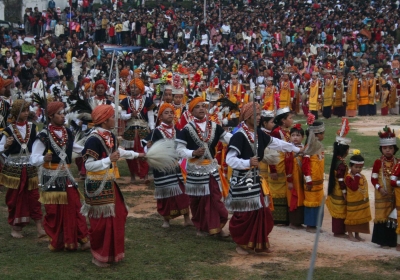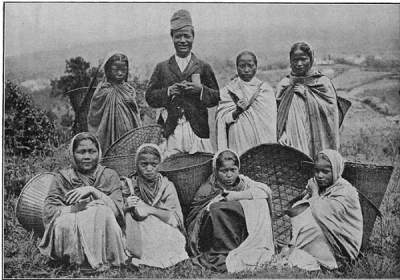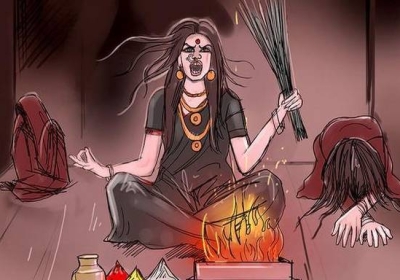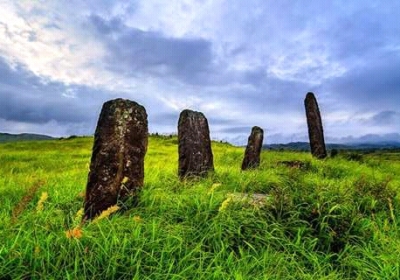Khasi Heritage: The Collapse of Diengiei
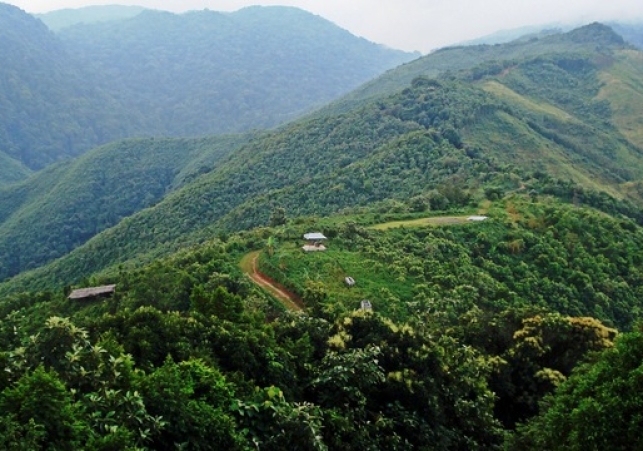
The mammon-serpent legend stated that ‘Thlen’ was the youngest son among nine siblings who inhabited the plain land. He was the most mischievous among the siblings and, on one occasion, he killed someone and the parents of the deceased person complained before the Hindu goddesses Durga and Kali, Durkamai and Kalimai in Khasi. The mother of the nine serpents was penalised by the goddesses and commanded to restore the life of the deceased person. The serpent mother complied with the decree, and the deceased revived again. However, the young serpent discretely resumed the habit of killing human beings and his mischievous behaviour was detested by society, which the monstrous creature was compelled to isolate himself in the wilderness. Ultimately, the young serpent was excommunicated from the plain land and sought refuge in the nearby hilly region of Khasi land. Initially, he was submissive and pleaded with the hill forest deity ‘Suidnoh’ from Laitryngew area near Sohra town. The forest deity ‘Suidnoh’ granted sanctuary to the mammon-serpent Thlen on the condition of abstaining from the notorious habit of devouring human beings. The young serpent could not assert any rights in a foreign land and succumbed to the dictate of the reigning forest deity ‘Suidnoh’ and was content with small animals on the periphery and sometimes with cattle, particularly goats. Nevertheless, the young serpent did not abide by the decree and discretely captivated any person from a group of travellers in odd numbers. Therefore, in Khasi customs, it is always mandated to travel in pairs, lest any odd person remaining from the group of pairs, particularly with a weak aura or ‘Jemrngiew’ in Khasi, might be vulnerable to the mammon-serpent ‘Thlen’ or any misfortune. While the rigorous vigilance of the forest deity Suidnoh was a hindrance to the mammon serpent, he was compelled to be satisfied with the easily available goats. Moreover, among all cattle and small wild animals in the vicinity, the goats are more vulnerable to being victimised by the grievous mammon-serpent. Most goats are dark in colour and usually have white marks on the forehead, and that is why the mammon-serpent makes a symbolic reference to human beings with the white mark on the head of the goats, known as ‘Langthohkhlieh’. It became a common phrase in the Khasi vocabulary on any assailable victims of any crime, where ‘Lang’ is a short form for ‘Blang’ meaning the goat, ‘Thoh’ means to mark, and ‘Khlieh’ means the head or forehead.
The mammon serpent was ashamed of the divine entity and reluctantly came out of the subterranean and made an occasional appearance on the surface of the earth after it replaced the skin. On one occasion, it transformed into a pious creature and offered his knowledge to Sormoh and Sorphin about the impending danger from the gigantic tree ‘Diengiei’. The mammon serpent, or Thlen, was angry with the tiger for not supporting his vow before the divine assembly and, instead, the tiger was bestowed with the privilege and obligation of a Sylvan deity. Moreover, tigers share their aural identity with certain human beings and the transformation of human beings into tigers is a prevalent culture in Khasi society. The mammon serpent is well aware that the tiger is the Sylvan deity of the grove surrounding the Diengiei tree, and device a scheme to disrupt the habitat of the tiger. The word ‘Diengiei’ means the horrific giant tree in the local dialect of the inhabitants surrounding the location of the mythical phenomenon. One fine day, when Syrmoh and Syrphin were busy in the cultivation field, the mammon-serpent pretended to be caring and generous to human beings and influenced them to chop away the Diengiei tree. Thlen told them that the foliage of the giant tree would grow rapidly and engulf the entire earth and human beings could be vulnerable prey of tigers, bears and other ferocious animals. In contemporary interpretation, it is a territorial conflict between reptiles and carnivorous mammals.
Thunder, Quake and Tiger are responsible protectors of nature and human society. They were in regular consultation with each other on contentious issues pertaining to the sustenance of nature and other creatures, including human beings. Generally, most animals are jealous and envious of human beings, although everybody lives in a harmonious relationship with each other. In this respect, the mammon-serpent succeeded in convincing Syrmoh and Syrphin about the peril of Diengiei. Both of them were mesmerised by the mischievous proposition of the mammon-serpent. Without consulting the deities in the celestial abode, they summoned a general council and shared the thoughts with everybody. The words of the mammon-serpent have tantalised the entire human society and a resolution was made to chop away the giant tree, Diengiei. All the menfolk were asked to bring their axes and machetes in the next morning. It was a huge fanfare for the entire human race to engage in the task of chopping off the giant tree. There was chanting of Phawar and motivational utterances accompanied with the refreshment of rice-beer and other quenching liquor. The Diengiei tree was so huge that the people could not complete the job in one day and had to retire for the night and resume in the subsequent day. At dawn, when the menfolk arrived, they found that the trunk of the tree had been restored to its original condition. Everybody was amazed and continued with the task till dusk and again they could not finish their job in one day. Again, the next morning, everybody was surprised that the bark of the trunk was restored and in this manner, rigorous work is going on for weeks, without any probable solution. Syrmoh and Syrphin were nervous and consulted among themselves to find the way out, because the mammon serpent was not there anymore to seek any advice. They were sitting a little further away from the spot beneath a tree, when suddenly a tiny bird emerged and told them that it knew the reason. However, the pair did not pay any heed to the tiny bird, a wren.
Hoi Kiw! U Diengїei
Ryngkew te u basa, u sumar ïa ka diengïei,
U kup ka dur u khla, ba u phong syrwet ki blei.
Shisien ka sngi u thlen, u pynshoi ï'u khun bynriew
Jutang u nud ban len, ha dwar U Blei um shlan ban kiew.
La pyntieng koh tympan, ba diengïeï un sa kah dum;
Ka rngiew bynriew un tan, ba u thlen marwei u thnum.
Sormoh te u Sorphin, shah tyndep jali jaum;
Ka kyiad ne u aphin, la buaid sha ka jingdum.
Bynriew ïa u Diengïeï, u la peit da ka matdong;
Ki ktien u thlen la trei, ba yn rat naduh dyngkhong.
Shongshit te u paidkar, ba ki rah la wait la sdie;
Diengïeï ki pam kulmar, tang shipruh ym lah khyllie.
Ka phreit te ïa u khla, h’u bynriew te ka pynshoi;
Kam riej ban kam thala, ba ka shlan ban khwan myntoi.


